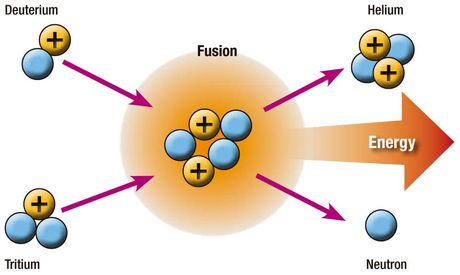ANU scientists solve fusion puzzle

Scientists around the world researching nuclear fusion have been struggling with the problem of how to heat hydrogen to hundreds of millions of degrees. Now scientists at the Australian National University (ANU) have solved the puzzle of why their heating beams sometimes fail, and instead destabilise the fusion experiments before energy is generated.
The solution used a new theory based on fluid flow and will help scientists in the quest to create gases with temperatures over a hundred million degrees and harness them to create clean, endless, carbon-free energy with nuclear fusion.
“There was a strange wave mode which bounced the heating beams out of the experiment,” said Zhisong Qu, from the ANU, lead author of the research paper published in Physical Review Letters.
“This new way of looking at burning plasma physics allowed us to understand this previously impenetrable problem,” said Mr Qu, a theoretical physicist in ANU Research School of Physics and Engineering.
Nuclear fusion of hydrogen into helium is the process that powers stars. It promises a large-scale energy source on Earth, based on fuel extracted from water, and does not create the long-term waste that uranium-based nuclear fission does.
The breakthrough is in magnetic confinement fusion, in which hydrogen is heated until it is a plasma 10 times hotter than the centre of the sun, and held in place by strong magnetic fields until fusion reactions occur.
However, plasma this hot is extremely turbulent and can behave in surprising ways that baffle scientists, at times becoming unstable and dissipating before any fusion reactions can take place.
Mr Qu developed a simpler theory for plasma behaviour based on fluid flow and was able to explain an unstable wave mode that had been observed in the United States’ largest fusion experiment, DIII-D.
Collaborator Dr Michael Fitzgerald, from the Culham Centre for Fusion Energy in the UK, said the new method made much more sense than previous brute-force theories that had treated plasma as individual atoms.
“When we looked at the plasma as a fluid we got the same answer, but everything made perfect sense,” said Dr Fitzgerald.
“We could start using our intuition again in explaining what we saw, which is very powerful.”
The leader of the research group, Associate Professor Matthew Hole, from ANU Research School of Physics and Engineering, said the theory’s success with the DIII-D wave puzzle was just the beginning.
“It will open the door to understanding a whole lot more about fusion plasmas and contribute to the development of a long-term energy solution for the planet.”
Associate Professor Hole said for him the quest for fusion energy went beyond a sustainable planet.
“I’m a bit of a Trekky at heart — the only way you are going to travel to another star system is with a fusion reactor,” he said.
Green hydrogen innovation wins Climate Innovation Challenge
South East Water and RMIT University have developed a method for producing green hydrogen from...
Alpha HPA gets finance for high-purity alumina plant
Alpha HPA has announced that it has reached Contractual Close on finance to build Australia's...
Orica to bring digital mining technology to Türkiye
Orica Digital Solutions has signed an agreement with Turkish company KAPEKS on the introduction...








